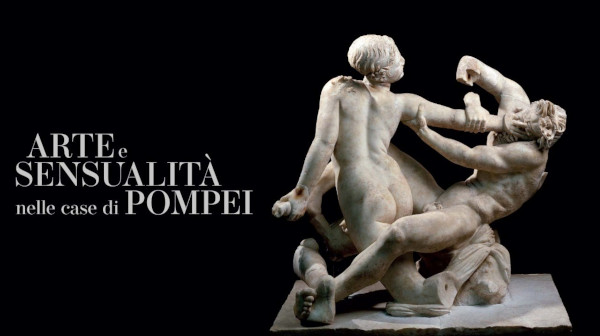As in recent months, a very heterogeneous audience, coming from all over the world, has returned to Pompeii, the question of how to explain the omnipresence of sensuality in the imagination of Pompeii, is becoming more relevant than ever.
This is the 'didactic' need which inspired the new exhibition, organized by the Archaeological Park of Pompeii and entitled "Art and sensuality in the Houses of Pompeii", was inaugurated on 21st April in the Palestra grande of the excavations and is open until September 3, 2023.
Curated by the Director Gabriel Zuchtriegel and the archaeologist Maria Luisa Catoni, professor at Scuola IMT Alti Studi Lucca, the exhibition aims to be a "key reading" that helps the public to better understand what is seen on the site.
The wider project, in addition to the exhibition at the Palestra Grande, includes an itinerary to discover various buildings on the site characterized by frescoes and references to this theme, reachable with the support of the My Pompeii App, which includes a dedicated section.
Around 70 works are on display, all from the deposits of the Archaeological Park of Pompeii; these include two bronze medallions with erotic scenes of the ceremonial chariot from Civita Giuliana and the refined ceiling of the cubiculum (bedroom) found collapsing on the floor, (which was then restored), in the House of Leda and the Swan, and the 3 walls of the cubicle of the Villa di Gragnano in Carmiano, rebuilt after the recent restoration.
The exhibition also enhances the recent discoveries in the context of the Great Pompeii Project. The new investigations were conducted under the direction of Massimo Osanna, the now Director General of Museums and the author of the essay "The hidden world of Pompeii. The bride's wagon, the slave room and the latest discoveries" Luana Toniolo, published by Rizzoli.
The central nucleus of the exhibition hosts works from Oplontis - Hermaphrodite and the Satyr and two pairs of Centaurs - in an installation that seeks to reconstruct the almost cinematographic dimension that evokes the context and the ancient imaginary.
In addition, a guide for children, The Centaurs of Pompeii, signed by the director with drawings by Daniela Pergreffi, aims to explain a "difficult" theme to children, following the traces of the centaur Mares in search of a centauress. In addition to enjoying the exhibition, young and older readers will meet a series of central figures of ancient myth, from Narcissus to Dionysus and Ariadne.
The exhibition is sponsored by American Express and Hotel Caruso A Belmond, Hotel Amalfi Coast in Ravello


